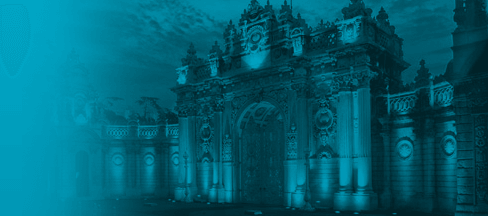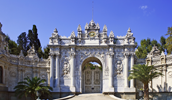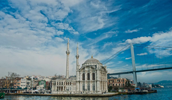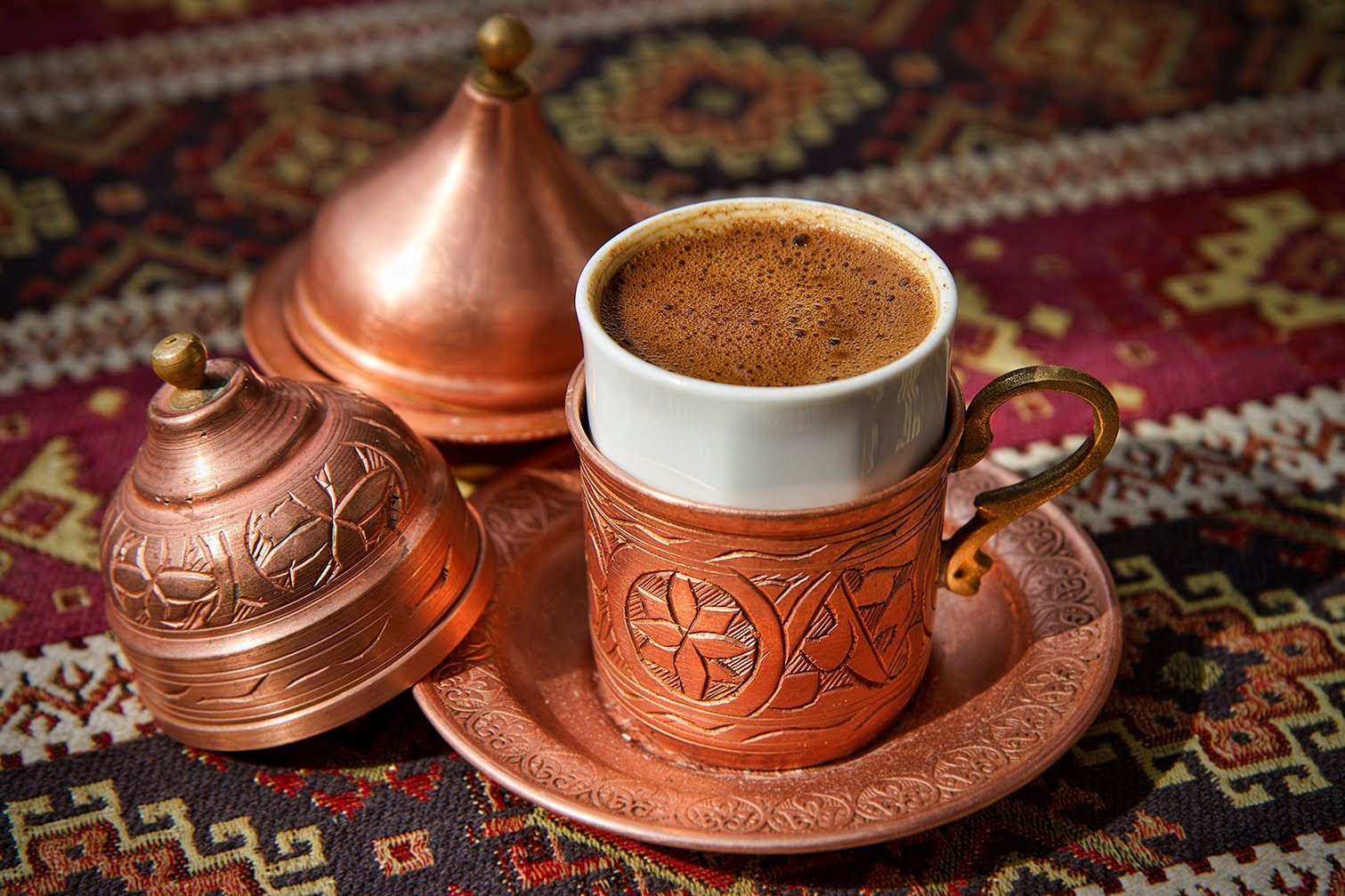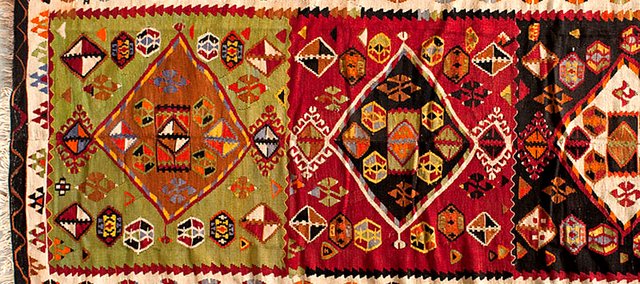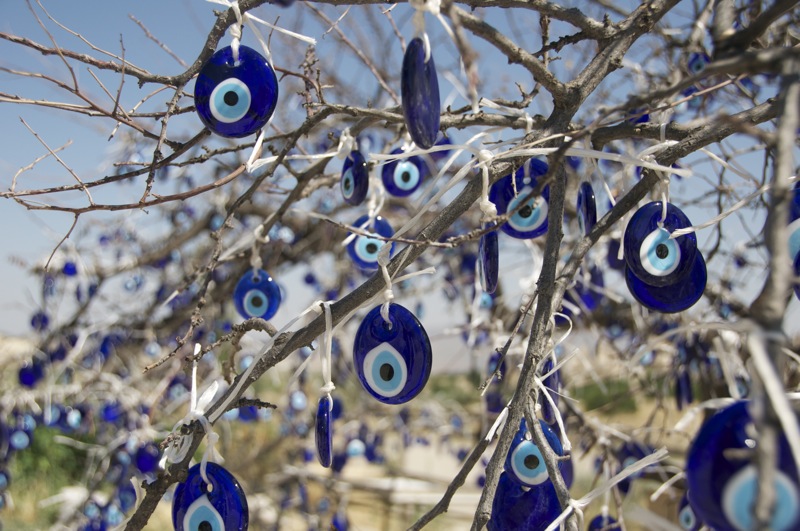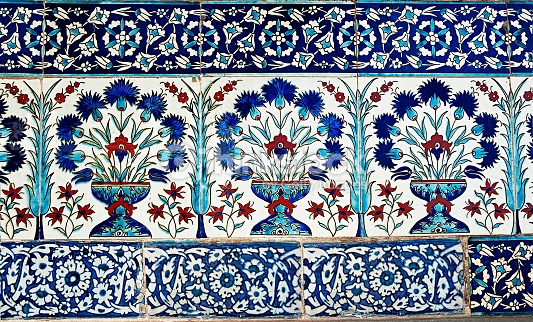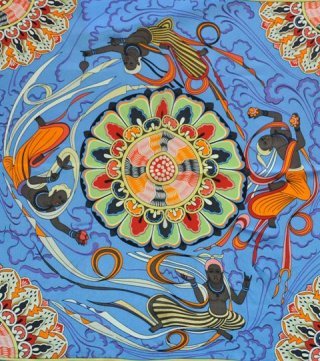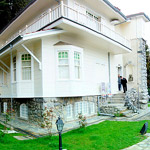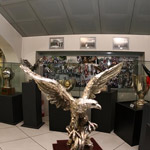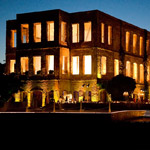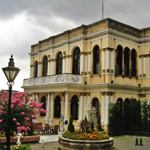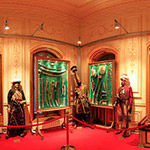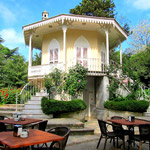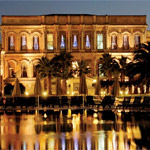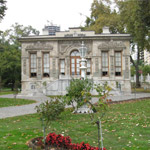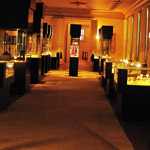Arts & Culture
Culture and Art in Istanbul
Istanbul is now firmly taken its rightful place in the World circulation of universal culture. Not so long ago, only 20-25 years ago, the arrival of celebrities in Istanbul regarded as a sensation. Famous guests immediately fell into the center of public attention. All press turned their attention to a celebrity, and television cameras followed each of his / her step. Today, things are different. The arrival of famous singers, stars and music groups - is an ordinary event for Istanbul, and does not cause more former hype. Istanbul, as well as Paris, Rome, New York - New York, Vienna or London won an honorable and well-deserved place among the cultural capitals of the world.
Istanbul - a kind of open-air museum, currently causes admiration for its historical and cultural heritage and great natural beauty. A huge area occupied by the city and the millions of city put on a par with the world's largest metropolises. With all its pluses and minuses Istanbul today is undoubtedly the "world city".
The population of Istanbul is in its composition mosaic. Internal migration from all countries makes Istanbul a unique symbiosis of different social groups.
Culture in everyday life
Culture has firmly taken its place in the daily life of Istanbul. People, even with the “average” level of education do not remain aloof from cultural events. Cinemas, where, sitting in comfortable chairs, you can watch the premiere of new movie on the same days as in America or Europe are in the legs with time, spoiling their visitor’s technological innovations, such as "Dolbi Full- Stereo". Magnificent art galleries, book salons and art cafe became an integral part of Istanbul.
Festivals of cinema, classical music and jazz, held in Istanbul, visited by many world stars. The interest in their concerts and performances is huge. Tickets sold out almost instantly. In the center of public attention now turns artistic and aesthetic aspect of the content, not the celebrity. Visits of stars are not a sensation, and ordinary cultural event. In the press and on television, they are considered only in that perspective, in special sections or programs dedicated to culture and the arts. Star only give concerts and leave.
The city, which is preferred
Istanbul is a city which is preferred when it comes to the organization of cultural events. The main reason for this is the respect, exercise, both art and people of art. Notable performers feel comfortable at concerts in Istanbul. Neither the audience nor the critics never compromise principles of respect for creativity. That's why the stars of pop, jazz legends and virtuosos of classical music - pure guests Istanbul.
In other words, Istanbul, in addition to the vast territory and many millions of people - it is also a warm and welcoming city, welcomes its guests “Merhaba" and with an open mind. And therefore, deserves endeavor "universal capital of culture."
Traditional Dances
Turkey has a very ancient tradition of folk dances that vary from region to region, each dance colorful, rhythmic, elegant and stylish. Here are the most popular ones: endemic to the region of Sivas in Central Anatolia dance "Chayda Chyran", performed by young girls dressed up in silver and gold embroidered kaftans who dance in the dark with lighted candles in their hands. In the southern Mediterranean region of Mersin, in the dance "Silifke Yogurdu" dancers click wooden spoons over your head. Dance "Sheikh Shamil" in the Kara region in the East shows a great dramatization of the legend of the Caucasian hero. Region Bursa is dance "Kilic Kalkan" - an epic dance performed with swords and shields. Izmir "Zeybek" - another epic and vigorous folk dance performed by dancers men, intermittent strikes knees on the floor with steps.
Folklore has also had a significant impact on the ballet. Originally brought from Europe and Russia, ballet institutionalized during the formation of the republic along with other kinds of art. Turkish State Ballet owes its formation and development of the great British choreographer Dame Ninnet de Valois. State Ballet in Ankara and Izmir, for decades, performed many world classics. Over the years, have been added to the repertoire of several foreign and Turkish productions, and some modern dance groups, such as the famous "Fire of Anatolia" (Anadolu Ateshi) has recently been given representation worldwide.
Turkish theater is believed to have originated from the popular Karagöz shadow play, something between moralistic Punch and Judy, and slapstick Laurel and Hardy. Then developed through the oral tradition plays in public places such as coffee houses and gardens, views, performed exclusively male actors.
Ataturk attached great importance to the arts, and actively encouraged the development of theater, music and ballet, laying the foundation of many state institutions. Today in Turkey thriving art with highly professional theater, opera and ballet, as well as a thriving film industry.
CINEMAS
Production of films in the original language of cinema, free from the influence of the theater, appeared in the 1950s. One of the first of these directors was Omer Lutfi Akad. By 1960, the screens were produced about 60 films a year. Since then, directors such as Metin Erksan, Halit Refig, Duygu Sagiroglu, Nevzat Pesen and Memduh Un were filmed with a plot based reflected social problems. In the period since the late 1960s, when television had a negative impact on the movie, created such famous directors as Yilmaz Güney, Atif Yilmaz, Sureyya Duru, Zeki Ökten, Şerif Goren, Fevzi Tuna, Ömer Kavur and Omer Ali Ozgenturk.
Nuri Bilge Ceylan, Fatih Akin, Ferzan Özpetek, Abdullah Oguz Semih Kaplanoglu and today are successful directors of Turkish cinema. Nuri Bilge Ceylan film - "Uzak" won the Grand Prix at the Cannes Film Festival in 2003. "The Edge of Heaven" (Yaşamın Kıyısında), which took director Fatih Akin (2006), received the award for Best Screenplay (Prix De Scénario) in Cannes in 2007. Golden Orange Film Festival record holder in Antalya - the movie "Egg" (Yumurta), directed by Semih Kaplanoglu, was declared the second best film at the European Film Festival in Estoril, which took place in Portugal and was awarded the Jury Eurimages Seville in Spain. The movie "Bliss" (Abdullah Oguz, 2007) was awarded the European Human Rights Council. Nuri Bilge Ceylan was awarded for Best Director at the Cannes Film Festival in 2008 for the film Three Monkeys (Üç Maymun).
During the year the country hosts numerous festivals for the Performing Arts, the most prestigious of these are Istanbul Film Festival in Antalya Film Festival.
FINE ARTS
Until the 18th century, painting in Turkey was carried out mainly in the form of miniatures, usually associated with handwritten illustrations in books. In the 18th century, the trend shifted towards oil painting, beginning with murals. Then, under the influence of European culture, military schools were taught painting. Therefore, the first Turkish artists were military. Modernization of Turkish painting, including the representation of the human figure, began with the founding of the Academy of Fine Arts under the direction of Osman Hamdi Bey, one of the great names in Turkish painting. In 1923, after the proclamation of the Republic was formed Society of modern painting, which was followed by many other schools.Art exhibitions in Turkey's cities, grew, more and more people began to acquire paintings, and banks and companies have started to invest in art.
LITERATURE
Literature has long been an important component of Turkish cultural life, reflecting the history of the people, their legends, and their mysticism, political and social changes that have affected this land throughout its long history. The oldest literary legacy of the pre-Islamic period is the Orhon inscriptions in northern Mongolia, written in 735 on two large stones in honor of a Turkish king and his brother. During the Ottoman period, the prevailing literary form was poetry; the dominant dialect was Anatolian or Ottoman. The main topic was the beauty and romance. Ottoman Divan literature was heavily influenced by Persian culture and written in a dialect compatible Arabic, Persian and Turkish. Apart from the aristocratic Divan literature in Anatolia continued to dominate popular literature in which troubadour - poet praised nature, love and God in simple Turkish. By the 20th century, the language of Turkish literature became simpler, but more politically and socially on the merits. The great and politically controversial poet Nazim Hikmet, inspired by the Russian poet Vladimir Mayakovsky, introduced free verse in the late 1930s. Currently, the undisputed master of the Turkish popular novel is Yaşar Kemal, with his authentic, colorful and compelling description of life in Anatolia. Young Turkish writers tend to go beyond the usual social issues, preferring to tackle problems such as feminism and aspects of the East-West dichotomy that continues to excite the Turkish intelligentsia.
The most famous and widely read writers of the period 1950-1990 can be listed as follows: Tarik Dursun K., Atilla Ihan, Yasar Kemal, Orhan Kemal, Kemal Tahir, Tariqk Bugra, Aziz Nesin, Mustafa Necati Sepetchioglu, Firuzan, Adalet Agaoglu, Sevgi Soysal, Tomris Uyar, Selim İleri, Cevat Sakir (Fisherman of Halicarnassus), Necati Dumlupınar, Taner Khaldun. Eminent poets of this period are: Behçet Kemal Çağlar, Necati Cumalı, Oktay Rifat Melih Cevdet Anday, , Edip Cansever, Ozdemir Ince, Ataol Behramoglu, Ismet Ozel, Turgut Uyar, Sezai Karakoç, Bahaetdin Karakoç, Umit Yasar Oğuzcan Orhan Pamuk.
In 2006, the Nobel Prize for Literature was awarded to the Turkish writer Orhan Pamuk, who in search of melancholic soul of his native city has discovered new symbols of the clash and interlacing of cultures.
OPERA & BALLET
In the period before the proclamation of the Republic in Turkey, opera, ballet and theater were mostly centered on Istanbul and Izmir. The first show of the opera at the imperial court was held with the participation of artists under the direction of Giuseppe Donizetti (1788-1856) of Italian opera. During the formation of the Republic of Ahmed Adnan Saygun, Nechil Kazim Acces and Cemal Resit Rey became the first composer of opera and musicals.
The first two operas were delivered in Ankara, Bastien and Bastienne Mozart at the State Conservatory in Ankara, where the disciples were filled with a libretto in Turkish (1936), and statement of Western operas such as Madame Butterfly and Tosca (1940-1941) Orchestrations, chorus and solo concerts in the 1950-1952 years helped shape the foundations for a modern State Opera and Ballet.
Meanwhile, in 1947, the famous ballerina and teacher Ninette de Valois was invited to Istanbul and thanks to her efforts, the National Ballet School in Yeşilköy created. In 1956-57's first dancers are graduated from the State Conservatory in Ankara, and in 1959-60 at the State Opera formed a corps de ballet. "Çeşmebaşı” one of the most important works in the history of Turkish ballet was first performed in 1965.
Despite the short history of opera in Turkey, covering a total of 56 years, the General Directorate of State Opera and Ballet Theatre has among its members many artists of world renown. In addition to Ankara and Istanbul, in many cities also formed branches of the theater, and all the results were very successful.
For further details about arts & culture, cinema stages and address information of concert halls, please click Click Here



